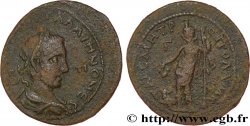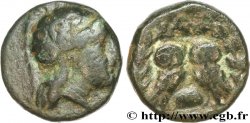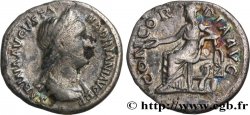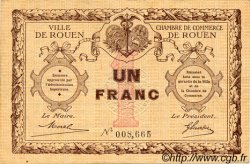brm_575316 - GALLIENUS Antoninien
Not available.
Item sold on our e-shop (2023)
Price : 125.00 €
Item sold on our e-shop (2023)
Price : 125.00 €
Type : Antoninien
Date: 261
Mint name / Town : Irregular mint
Metal : billon
Millesimal fineness : 100 ‰
Diameter : 21,5 mm
Orientation dies : 6 h.
Weight : 3,36 g.
Rarity : R2
Coments on the condition:
Exemplaire sur un flan irrégulier, large et ovale, un peu court sur la légende de revers. Belle tête de Gallien. Joli revers de style fin. Patine gris foncé avec des reflets métalliques
Catalogue references :
Obverse
Obverse legend : GALLIENVS AVG.
Obverse description : Tête radiée de Gallien à droite (O).
Obverse translation : “Gallienus Augustus”, (Gallien auguste).
Reverse
Reverse legend : FECVNDITAS AVG.
Reverse description : Fecunditas (La Fécondité) debout à gauche, tenant une corne d'abondance de la main gauche et tendant la main droite à un enfant qui est placé devant elle.
Reverse translation : “Fecunditas Augustæ”, (La Fécondité de l’augusta).
Commentary
Poids lourd. Avec son argenture superficielle. Rubans de type 1. Imitation hybride avec un revers destiné à Salonine ! Si le revers peut laisser imaginer une frappe officielle de l’atelier de Rome, le style du droit ne laisse planer aucun doute sur l’origine barbare de cette monnaie.
Heavyweight. With its superficial silver plating. Type 1 ribbons. Hybrid imitation with a reverse intended for Salonina! While the reverse may suggest an official strike from the Roman mint, the style of the obverse leaves no doubt about the barbarian origin of this coin.
Heavyweight. With its superficial silver plating. Type 1 ribbons. Hybrid imitation with a reverse intended for Salonina! While the reverse may suggest an official strike from the Roman mint, the style of the obverse leaves no doubt about the barbarian origin of this coin.








 Report a mistake
Report a mistake Print the page
Print the page Share my selection
Share my selection Ask a question
Ask a question Consign / sell
Consign / sell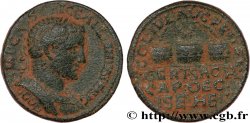
 Full data
Full data

